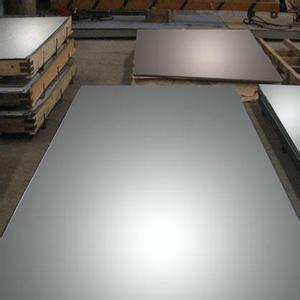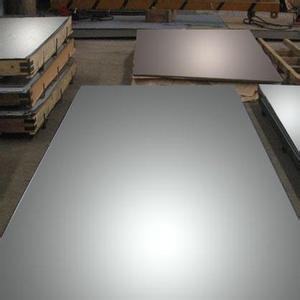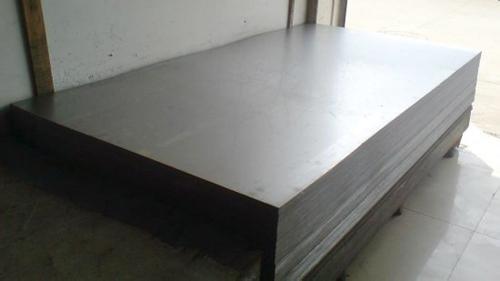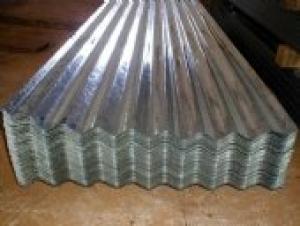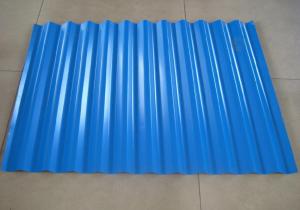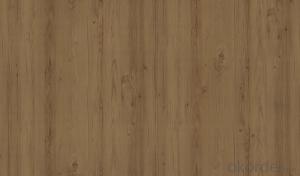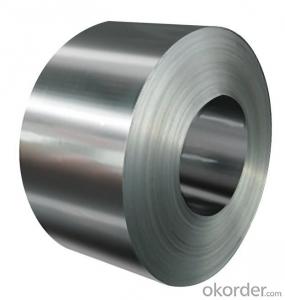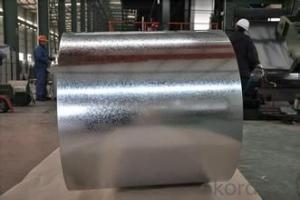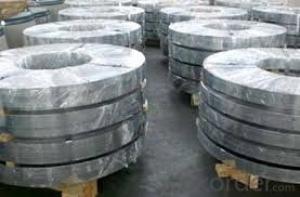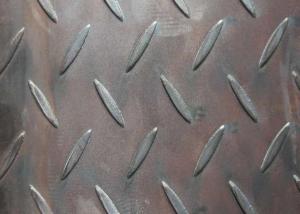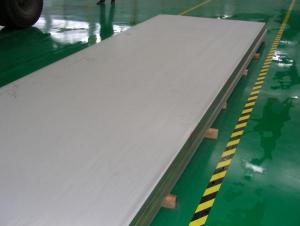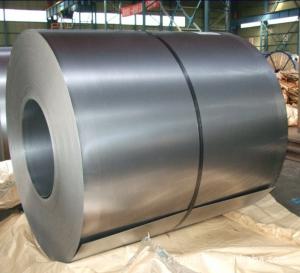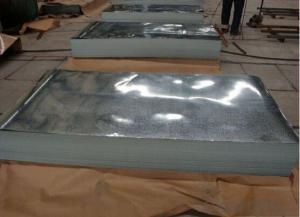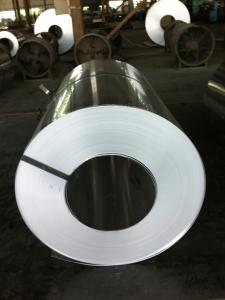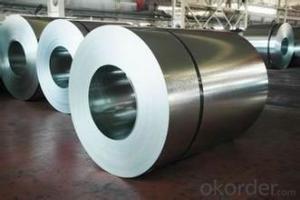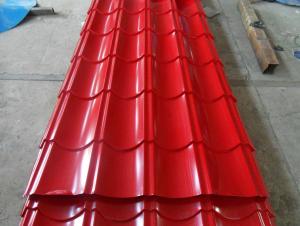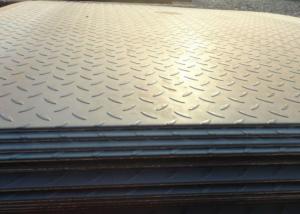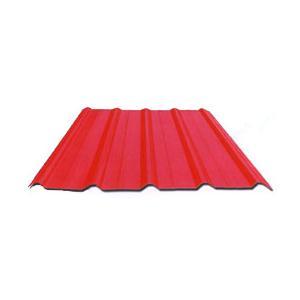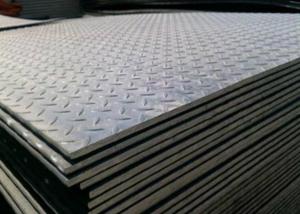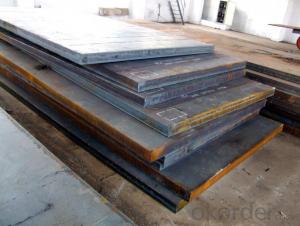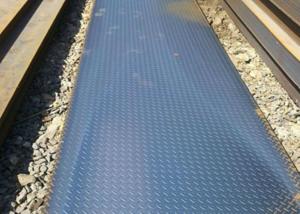High grade cold rolled sheet
- Loading Port:
- China Main Port
- Payment Terms:
- TT OR LC
- Min Order Qty:
- -
- Supply Capability:
- -
OKorder Service Pledge
OKorder Financial Service
You Might Also Like
Cold rolled sheet steel is a plain carbon structural steel cold rolled platereferred to, also known as cold rolled plate, commonly known as cold plate, is sometimes mistakenly written in cold rolling plate. Cold plate is made of hot rolled strip made of ordinary carbon structural steel, thickness of less than 4mm after further cold rolling steel plate. Because the rolling at room temperature, does not produce the oxide scale, therefore, the surface quality of cold plate, high size precision, coupled with the annealing treatment, themechanical properties and process performance are better than the hot rolled thin steel sheet, in many fields, especially the field of the manufacture ofhousehold appliances, has been gradually replaces the hot rolled thin steel sheet.
Cold rolling sheet uses a very wide, such as automotive manufacturing,electrical appliances, vehicles, aerospace, precision instrument, canned food.
Application of brands: Q195, Q215, Q235, Q275; SPCC (Japanese brands);ST12 (German designation)
The general structure of Japan said method for steel grades (JIS standard)
Common structure steel 1 Japanese steel grades mainly consists of three parts: the first part of said materials, such as: S (Steel) said steel, F (Ferrum)said iron; the second part represents a shape, type, different applications,such as P (Plate) said the board, T (Tube) said tube, K (Kogu said tool; the third part) represent the feature numbers, generally is the minimum tensile strength. Such as: SS400, the first S said steel (Steel), second S said "structure" (Structure), 400 for the lower tensile strength of 400MPa, the integral representation for the general structure of the tensile strength of 400MPa steel.
2.SPHC - the first S for steel Steel is an abbreviation for Plate, P inabbreviation, H is a hot Heat acronym, abbreviation for C businessCommercial, the integral representation of hot rolled steel plates and strips for general use.
3.SPHD says hot steel sheets and strip for stamping.
4.SPHE hot rolled steel plates and strips expressed deep drawing.
5.SPCC cold rolled carbon steel sheet and strip, said the general, equivalent to China Q195~Q215A grade, ST12. grade Germany abbreviation Airbenderthird letters of C cold Cold. To ensure the mechanical properties, in the end add T brands such as SPCCT.
6.SPCD cold rolled carbon steel sheet and strip - said by stamping, equivalent to China 08AL (13237) quality carbon structural steel, equivalent to theGerman brand ST13.
7.SPCE cold rolled carbon steel sheet and strip expressed deep drawing, the equivalent of the Chinese 08AL (5213) deep drawing steel, equivalent to theGerman brand ST14. Aging treatment, in the end add N brands, such as SPCEN.
Cold rolled steel sheet and strip for Quenched and tempered Code: annealingstate A standard conditioning for S, 1/8 for 8,1/4 is 4,1/2 hard hard hard hard2, 1.
Surface processing code: Matt finishing D, bright finish rolling for B. As SPCC-SD said, for general use standard tempered cold-rolled carbon sheet mattefinish rolling. As SPCCT-SB said standard conditioning, light processing,requests to guarantee cold-rolled carbon sheet mechanical properties.
- Q: Can steel sheets be used for signage or advertising boards?
- Yes, steel sheets can be used for signage or advertising boards. Steel is a durable and versatile material that can withstand outdoor elements, making it suitable for long-lasting signage. It can be easily cut, welded, and painted to create customized and eye-catching advertising boards.
- Q: Can steel sheets be used for signage or advertising displays?
- Yes, steel sheets can be used for signage or advertising displays. Steel is a durable and versatile material that can be cut, shaped, and painted to create eye-catching displays. It provides a sturdy base for signs and can withstand outdoor conditions.
- Q: Can the steel sheets be used for storage cabinets?
- Yes, steel sheets can be used for storage cabinets as they are durable, strong, and provide excellent protection for stored items.
- Q: Can steel sheets be used for window frames?
- Yes, steel sheets can be used for window frames. Steel is a strong and durable material that can provide stability and security to window structures.
- Q: How long do steel sheets last?
- The lifespan of steel sheets can exceed that of other materials, lasting for many years. Several factors influence the longevity of steel sheets, including the quality of the steel, the conditions it encounters, and the level of maintenance it receives. Typically, steel sheets of superior quality that are correctly installed and well-maintained can endure for several decades, or even longer. Nevertheless, if steel sheets are exposed to severe environments, such as extreme temperatures, humidity, or corrosive substances, their lifespan may diminish. To prolong the lifespan of steel sheets and guarantee their durability, regular inspections, cleaning, and maintenance are essential.
- Q: Are the steel sheets suitable for automotive body repairs?
- Indeed, automotive body repairs can be effectively carried out using steel sheets. Given its exceptional strength and durability, steel is widely utilized in the automotive sector. This material exhibits remarkable resistance to impact and contributes significantly to the structural integrity of the vehicle's body. Consequently, steel sheets are frequently employed in the restoration of impaired or dented body panels, facilitating a flawless repair that reinstates the vehicle's original form and robustness. Moreover, steel sheets can be effortlessly manipulated and molded to correspond precisely to the unique contours of the vehicle, guaranteeing a meticulous and precise restoration.
- Q: What is a cold rolled sheet with plastic sprayed?
- First, cold rolled steel sheet:Cold rolled steel plate is cold-rolled steel plate, commonly known as cold plate. Cold rolling is a steel plate that is further rolled to the target thickness at room temperature. Compared with hot rolled steel sheets, cold-rolled steel sheets are more accurate, smooth and beautiful in appearance and superior in mechanical properties, especially in terms of machinability. The minimum thickness of cold rolling is below 0.1--8.0MM, and the minimum thickness and width are determined by the equipment capacity and market demand of each plant.
- Q: How do steel sheets handle water resistance?
- Steel sheets generally have good water resistance due to their inherent properties and protective coatings. Steel is a non-porous material, meaning it does not allow water to penetrate easily. The smooth surface of steel sheets prevents water from seeping through. Additionally, steel sheets are typically coated with protective layers such as galvanized zinc or paint, which further enhance their water resistance. Galvanized steel sheets are coated with a layer of zinc, which acts as a barrier against moisture and prevents corrosion. Zinc is highly resistant to water, and even if the coating gets scratched, the zinc layer sacrificially protects the underlying steel from rusting. This makes galvanized steel sheets highly durable and water-resistant, even in extreme conditions. Painted steel sheets are another common option. The paint acts as a protective layer that prevents water from directly contacting the steel surface. The paint forms a barrier that prevents moisture from penetrating the steel and causing corrosion. However, it is important to note that the quality and thickness of the paint coating play a significant role in determining the water resistance of painted steel sheets. In summary, steel sheets handle water resistance well due to their non-porous nature and protective coatings. Whether it is galvanized steel sheets with a zinc coating or painted steel sheets with a protective layer of paint, both options offer reliable water resistance and are suitable for various applications where exposure to water is a concern.
- Q: What is the yield strength of steel sheets?
- The yield strength of steel sheets can vary depending on the type and grade of steel being used. However, typically, common carbon steel sheets have a yield strength ranging from 250 MPa to 400 MPa.
- Q: Are steel sheets suitable for agricultural applications?
- Yes, steel sheets are suitable for agricultural applications. Steel is a durable and versatile material that offers excellent strength and resistance to corrosion, making it ideal for various agricultural uses such as barns, sheds, fencing, and equipment storage.
Send your message to us
High grade cold rolled sheet
- Loading Port:
- China Main Port
- Payment Terms:
- TT OR LC
- Min Order Qty:
- -
- Supply Capability:
- -
OKorder Service Pledge
OKorder Financial Service
Similar products
Hot products
Hot Searches
Related keywords
